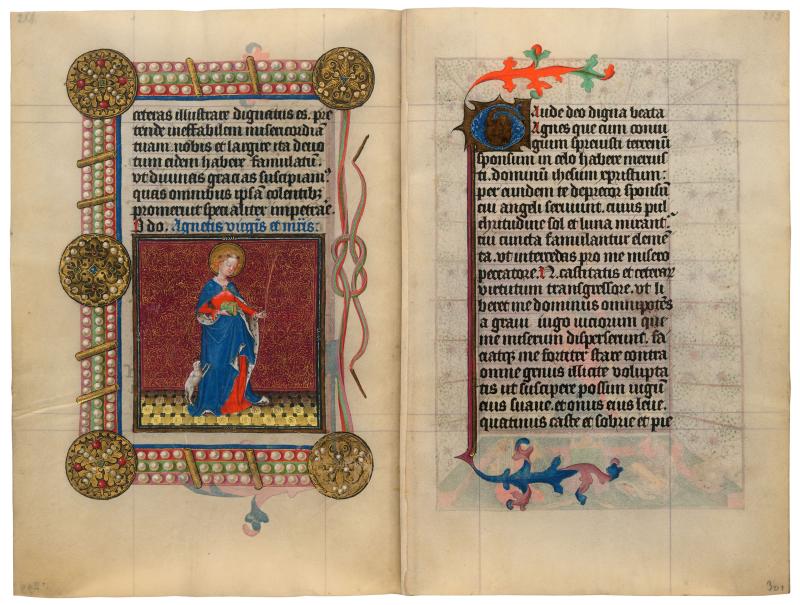
St. Agnes
Purchased on the Belle da Costa Greene Fund with the assistance of the Fellows, 1963
An embodiment of chastity, Agnes is accompanied by a small lamb, symbol of purity and a pun on her name (agnus in Latin). The garland of flowers around her head contrasts with the luxurious necklace that forms the border. Engraved gold medallions, set with rubies and pearls, are joined by multicolored bands richly embellished with numerous pearls. The jewelry alludes to the legend in which Agnes preserved her chastity against a man who sought to tempt her with jewels; she claimed to have a fiancé (referring, of course, to Christ) who had already given her a necklace of precious stones.
